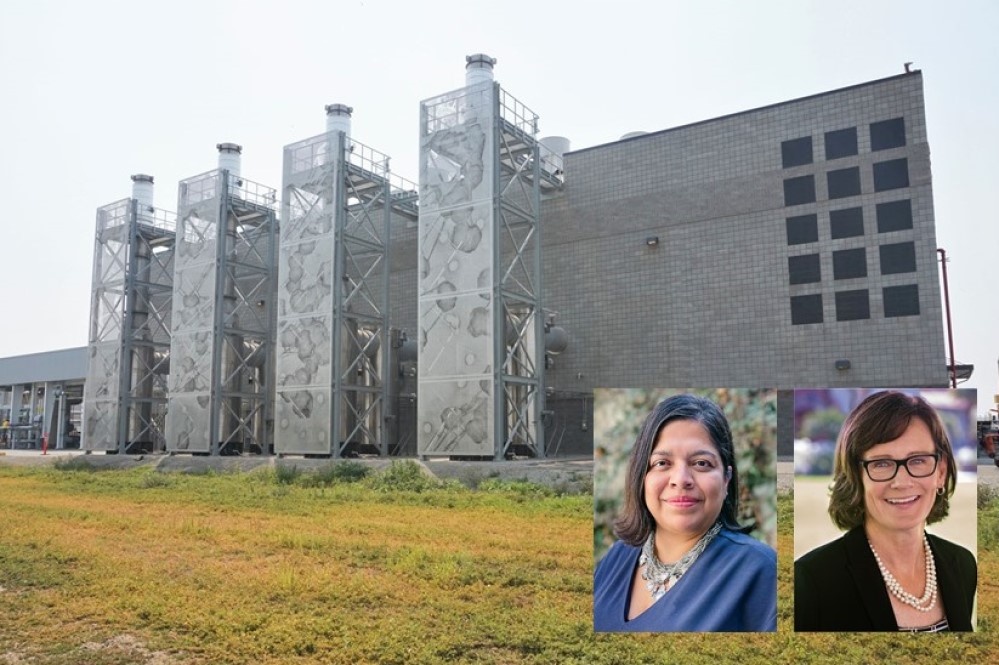
When Kerrie Romanow first joined the San José Environmental Services Department (ESD) more than a decade ago, she noticed there were a lot of 7:00 a.m. meetings. As the single parent of a three-year-old daughter, it was nearly impossible to get to those meetings on time.
“And if I did make it,” she says, “I could in no way put my best foot forward because it was crazy town getting my daughter to daycare and getting to work. And I noticed that all of the women would fly in between 7:00 and 7:05, half of us with wet hair, and the men would be there, generally, a little bit calmer.”
When she asked the leader of one of these meetings if they had to be at 7:00, he replied, “No one has ever asked me that.” It was no problem moving the meeting, he said.
The timing of a meeting may seem like a small thing, but it’s one of many ways in which gender differences show up in the workplace.
As director of ESD, Romanow has fostered a culture of both gender and ethnic diversity. Eight of the 11 people who comprise ESD’s leadership team, including deputy directors and division managers, are women. Five of that group are people of color and one is LGBTQ. That diversity brings a variety of ideas and perspectives to the department, fueling creativity and helping ESD achieve its mission of protecting public health and the environment.
“Diversity is something I think is a cultural value for me personally and for our department,” says Romanow. “We just want you to genuinely show up as yourself.”
“When employees feel that everyone has the opportunity to succeed based on the merits of their contributions,” Romanow adds, “it creates a sense of optimism that permeates the workplace.”
ESD’s welcoming approach to diversity also informs the department’s philosophy about work-life balance. “We don’t want people to choose their family or their job,” Romanow says. “We think you should be able to do both.”
Having ethnic diversity in leadership positions and throughout the workforce is especially important given the makeup of San José, where 32 percent of the population is Latino and 36 percent is Asian, according to Census data.
Mariana Chavez-Vazquez leads ESD’s $2.1 billion Capital Improvement Program (CIP) to upgrade and modernize the San José-Santa Clara Regional Wastewater Facility, the largest advanced wastewater treatment facility in the western United States. The newly constructed Cogeneration Facility, which powers the plant with a blend of biogas and natural gas, won the 2021 Excellence in Innovation and Resiliency Award from the California Association of Sanitation Agencies.
As an engineer, Chavez-Vazquez works in what has traditionally been a male-dominated field. Early in her career, she attended meetings where she was the only woman among a group of skeptical men. “They would look at you as if thinking, ‘You’re a woman, you don’t know what you’re talking about,’ and to top it all off, here I am, 5’2” and with an accent,” says Chavez-Vazquez, who was born in Mexico City.
Being a female engineer can still be tough, she says, but the work culture at ESD is a big improvement over what she faced years ago as a consultant. Upon joining ESD, she was encouraged by the presence of women in leadership positions and the department’s willingness to hire and promote people of color.
“You can see the potential in people,” she said of ESD. “You can see that if they have an accent that doesn’t change the capability that they have to do the work; if they don’t look exactly like you expect someone to look, that doesn’t change the work that they do.”
Fifty-six percent of ESD staff are non-white, with 21.6 percent identifying as Asian or Pacific Islander and 23.5 percent being Latino.
The CIP team is particularly diverse, with members hailing from Asia, South Asia, the Middle East, and Africa. Before the pandemic, the team organized an annual “International Day,” when staff would wear outfits and share meals representing their native cultures.
Chavez-Vazquez has found that diversity in leadership sends a message of inclusivity. Just as she found it refreshing to discover that she had female bosses at ESD, she’s heard from people who are inspired to see a Latina in charge of the CIP.
Chavez-Vazquez recalls a touching letter she received from a member of her team, who called her a role model. “Representation matters,” her colleague told her.
Diversity doesn’t just improve the culture of work; it improves the quality of work. Romanow and Chavez-Vazquez agree that bringing together people with diverse backgrounds leads to a wider range of ideas and better policies.
“I don’t know how many times in my tenure at ESD I’ve heard someone say, ‘You know, I’ve never thought of it that way,’” says Romanow. “And, to me, that’s diversity: ‘I’ve never thought of it that way.’”
Originally published at https://www.sanjoseca.gov/Home/Components/News/News/3292/308.
Watch a video about the department at https://youtu.be/qldEPLNCh_0.

AARON KINNEY is a senior public information representative in the Environmental Services Department for San José, California.
New, Reduced Membership Dues
A new, reduced dues rate is available for CAOs/ACAOs, along with additional discounts for those in smaller communities, has been implemented. Learn more and be sure to join or renew today!
